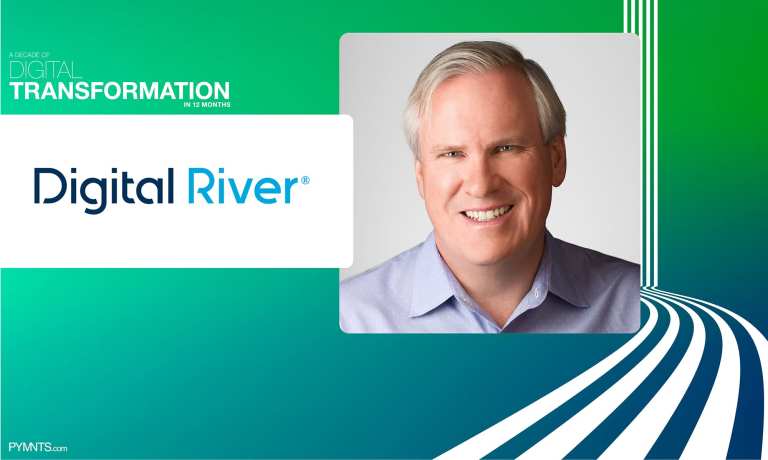
In A Decade of Digital Transformation in 12 Months, 46 C-suite executives spoke with PYMNTS for its Q2 eBook on what the world will look like as recovery rolls on and the next iteration of normal rolls out. In this excerpt, Adam Coyle, CEO of Digital River, explores how digital channels have become not just a convenience, but a necessity—and how businesses must accommodate consumers’ changing needs.
Read the entire eBook here.
The most lasting impact of the pandemic era is the fundamental shift it has caused in consumers’ shopping behaviors. While online shopping has been with us for some time, it wasn’t ubiquitous across product categories and market verticals. Consumer behavior is notoriously hard to change, and while services like grocery and meal delivery apps have been around for several years, most consumers had either never used them or only used them sporadically, as consumers continued to organize their lives around familiar patterns of convenience.
But when the pandemic forced brick-and-mortar merchants to close, digital channels became more than a convenience – they became a necessity. Almost overnight, purchases consumers might have previously hesitated to make online — whether due to a lack of familiarity, a fear of inconvenience or perceived risk — were suddenly forced to digital channels as the only choice. And amazingly, for the most part, it worked. Consumers quickly realized that they could not only change their buying habits and become eCommerce-centric, but that services and tools existed to make that experience seamless, whether they were buying from around the corner or around the globe.
Now, just as we are reimagining what work will look like now that many companies have experienced a mostly remote workforce, we are reimagining what commerce will look like in this new environment. As shoppers were essentially forced to change their habits, they discovered the convenience of shopping for literally anything online. They’ve learned how to use payment methods like digital wallets and buy now, pay later (BNPL) solutions, options that were gaining traction pre-pandemic but have now become staples for many consumers who were once hesitant to use them.
Long-held cultural preferences are changing as well, as consumers have been forced to adapt to the realities of 2020. A good example is Germany, which saw an enormous shift to card payments in 2020 — a remarkable change for a country where shoppers have long preferred the use of cash. Perhaps even more significant is the change in B2B commerce, where workers are bringing the expectations of convenience and choice they experience in their personal transactions into the workplace and demanding “consumer-like” eCommerce options for business purchases.
In many ways, the pandemic also laid bare how dependent we are on global supply chains. Merchants can benefit from this by thinking globally and understanding the opportunity, as well as the complexity of cross-border commerce. In global selling, getting the back-end experience right is the key to growing revenue, as shoppers focus less on location and more on getting the product they want when they want it, at the price they want, and via the payment method of their choice.
Successful cross-border commerce means acting locally even if you aren’t physically there — by offering local fulfillment, local processing and the payments customers want to use. Once they’ve had a positive experience with a new and more convenient way to shop, consumers will continue to take advantage of those experiences. As a result, brands that saw online direct-to-customer sales jump during the pandemic need to keep investing to grow that channel, as their customers will continue to look to buy direct.